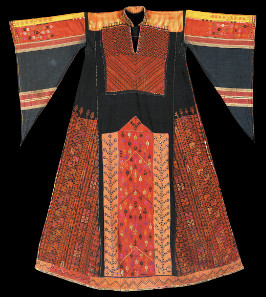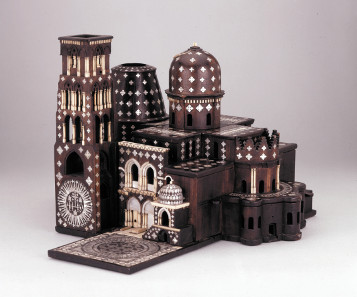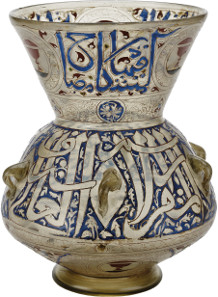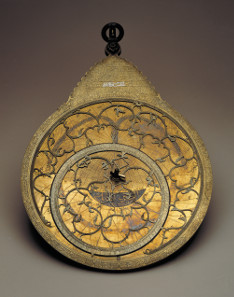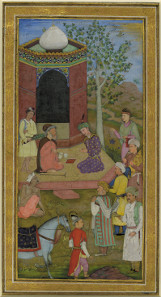May 21, 2015 – The Albukhary Foundation Gallery of the Islamic World will open to the public at the end of October 2018 and will reveal the British Museum’s outstanding collections in engaging new ways, underscoring the global connections of this vast region of the world. This new gallery represents a shared vision between the British Museum and the Malaysia-based Albukhary Foundation and will give visitors an understanding of the diverse and wide-ranging cultures of the Islamic world.
Tile depicting the sanctuary at Mecca with the Kaaba at the centre. Iznik, Turkey, 17th century. © The Trustees of the British Museum.
This announcement is also marked by an award celebrating the contribution of the British Museum’s touring exhibition ‘Hajj: journey to the heart of Islam’ that was first shown at the British Museum in 2012. This award is an inaugural annual Prize for Educators, instituted jointly in 2014 by the Islamic Educational, Scientific and Cultural Organisation (ISESCO) and the Oxford Centre for Islamic Studies (OCIS).
The objective of the Prize for Educators award is to promote dialogue and understanding between peoples, cultures and civilisations. The award promotes these shared values by paying tribute to major institutions, leading figures and sponsors active in the promotion of values of peace and coexistence. This year, the award has been issued to the British Museum for its widely praised exhibition ‘Hajj: journey to the heart of Islam’, both for its display in Bloomsbury in 2012 and for the touring versions to Doha, Leiden and Paris, which encapsulated its concepts and ideas. It was felt by ISESCO and OCIS that this exhibition has done much to promote greater understanding of the annual pilgrimage of Hajj and its importance to Muslims.
Embroidered dress (jillayeh). Southern plain, Palestine, 1920s. © The Trustees of the British Museum.
Unique amongst major museums, the British Museum’s collections are able to represent the diversity of cultures of the Middle East, Turkey, Central Asia and South and South-East Asia from the advent of Islam to the present day. The collections encompass the art and material culture of the Islamic world from Africa to China, including archaeology, decorative arts, the arts of the book, Middle Eastern and Central Asian ethnography and textiles, and modern and contemporary Middle Eastern art. The Albukhary Foundation Gallery of the Islamic World will also reflect the connections between the cultures of Islam and the Ancient World on the one hand, and the cultures of the Mediterranean World and Europe on the other. With the support of the Albukhary Foundation, the Museum can now radically redisplay its important collections, placing them in a suite of galleries at the very heart of the British Museum.
Model, Church of Holy Sepulchre in Jerusalem, 18th century. © The Trustees of the British Museum.
The space for the new gallery will be achieved by joining two beautiful and historic galleries, Rooms 42-45 on the first floor of the Museum that are currently closed to visitors. These new gallery spaces are adjacent to the galleries of early and modern Europe, including the recently refurbished Sir Paul and Lady Ruddock Gallery of Sutton Hoo and Europe AD 300-1100, therefore presenting a more cohesive historical narrative between medieval Europe, Africa, Asia and the Middle East.
Gilded and enamelled mosque lamp, inscribed with the chapter of Light (Qur’an 35). Mamluk Egypt or Syria, 14th century. © The Trustees of the British Museum.
The first of the two gallery spaces will look at the region from the beginning of Islam to about 1500, highlighting the arts of the great medieval dynasties. The visitor will be made aware of clear connections to narratives within current displays nearby, where objects relating to Byzantium, the Vikings, the Crusades and Islamic Spain are displayed. Here we will also see the impact of Islamic art on western art with objects such as Mamluk mosque lamps and metalwork, which were sources of inspiration for 19th-century European artists and designers.
Astrolabe made for the Safavid ruler Shah Husayn (d. 1722). Isfahan, Iran, dated AH 1124 (AD 1712/3). This was in the collection of Sir Hans Sloane, founder of the British Museum. © The Trustees of the British Museum.
In the second gallery, the visitor will encounter objects that represent the pinnacle of creativity under the three major dynasties that dominated the Islamic world from the 16th century: the Ottomans, Safavids and Mughals. Their enlightened patronage saw the production of magnificent objects, including ceramics, jewellery and painting that are among the glories of the British Museum’s collection. Also highlighted will be objects and textiles from Central Asia and Muslim South and South-East Asia, which in turn will link to displays in other parts of the Museum. The juxtapositions and contextualization of objects from all reaches of the Islamic world in these galleries will continually draw attention to the cross-fertilisation existing between regions and time periods, encouraging visitors to explore these connections.
This innovative redisplay will draw on the full breadth of the Islamic collections and facilitate dynamic and engaging displays within a chronological and geographically organised structure. The gallery will also highlight the importance of non-Muslim communities. While Islam was, and in most cases remains, the dominant religious and associated political culture of the region covered by the displays within these galleries, communities of other faiths – including Jewish, Christian, Hindu, Zoroastrian and others – played an immensely important role in the social, political and cultural life of the region and will therefore also be represented through the objects in the gallery.
Album leaf representing a prince visiting a holy man, Mughal India, 1610. © The Trustees of the British Museum.
This refreshing redisplay will be supported by digital media which will allow key objects, artists and techniques to be presented with more in-depth interpretation. New areas in this space will be dedicated to rotating displays of light sensitive material, a pressing need given the Museum’s world-class collection of Persian and Mughal paintings and calligraphies, and the rich and growing holdings of mostly organic ethnographic material including textiles and contemporary works on paper. Through a shared vision and collaboration with the Albukhary Foundation, the British Museum hopes to encourage increased public engagement with Islamic art and culture while simultaneously placing the narrative of Islamic civilisations within a much wider context.
For more information on the British Museum click here.
The Albukhary Foundation presents itself on this official website.






